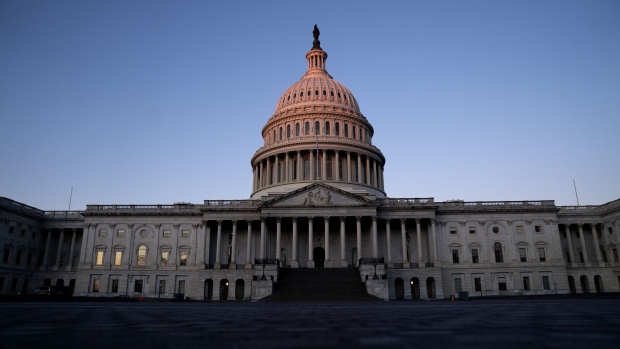Jun 17, 2024
Debt-Ceiling’s Eventual Return Already Has Fund Managers On Edge
, Bloomberg News

(Bloomberg) -- Investors are already planning portfolio changes in anticipation of the next US debt-ceiling showdown — even if it’s still more than six months away.
Money-market funds are the largest holders of Treasury bills, which become increasingly vulnerable to default as the US government nears the point at which it cannot pay its debt. Even as managers of those funds — which collectively hold a record $6.12 trillion in total assets — still devour new issuance, they soon expect supply to slow as the Treasury approaches its debt limit.
That limit is on track to be reinstated on Jan. 1, putting pressure on policymakers to find a solution before the Treasury’s borrowing authority finally runs dry. While market participants have dealt with this repeatedly over the past decade, front-end markets are still at risk of being jolted by the threat of default. During the most recent episode last year, Treasury bill yields at one point topped 7%.
That will effectively force them to consider parking more cash at the Federal Reserve’s overnight reverse repurchase agreement facility, investors and strategists said. That offers lower yields, but is safer and more liquid than other qualified investments.
“We’ve been through this debacle many a time,” said Mike Bird, senior portfolio manager at Allspring Global Investments, who spoke at the Crane’s Money Fund Symposium in Pittsburgh last week. He noted this will be his 10th debt-limit episode. “Internally, we have a pretty good strategy about how we can handle the debt ceiling, and shareholders and investors have become more educated on what the process can entail.”
Congress can raise or suspend the US debt ceiling in moments when the Treasury needs more money to sustain the federal government and pay obligations like Social Security and Medicare.
Once the limit is close to being breached or suspension ends, Treasury deploys a series of extraordinary measures to ensure it has enough borrowing authority to remain under the limit until a deal is reached. These include slashing the sizes of bill auctions and suspending payments to Civil Service accounts.
T-bills and other cash-like instruments typically make up the bulk of money-market portfolios. Those funds have digested roughly $2.2 trillion worth of Treasury debt since the beginning of 2023 — and expect to keep buying as long as they can. Some expect the government to pull back on bill supply later this year as the debt ceiling gets closer to returning.
“Do it and do it in droves because there’s going to be fewer bills out there,” said Gennadiy Goldberg, head of US interest rate strategy at TD Securities. “This year is the tail end of the big surge.”
TD expects the US to exhaust its borrowing authority in late-summer 2025, with net bill issuance of $170 billion in 2025.
Government legislation suggests the dropoff to the debt-cap reinstatement may not be as severe as past debt-ceiling debacles, but there is always an air of unpredictability, particularly in an election year.
The last time there was too much cash chasing too few assets in late-2022, balances at the Fed’s reverse repo facility swelled to a peak of $2.55 trillion. Once the debt limit was suspended in June 2023, the Treasury Department flooded the market with bills, allowing money funds to return to higher-yielding assets.
Mark Cabana, head of US interest rate strategy at Bank of America Corp., expects money funds to shift back into reverse repos once again as an imbalance between the Treasury’s cash and collateral levels grows.
While money-fund managers are aware of the supply that awaits them after the debt ceiling is resolved, again, they’d rather not go through it.
“I’d happily give back that avalanche of supply we get after for not having to deal with the debt ceiling,” Bird said.
©2024 Bloomberg L.P.






